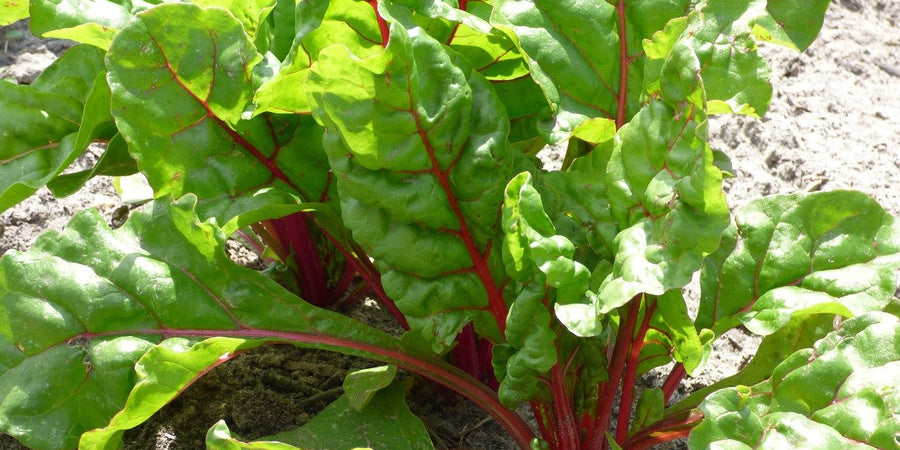How To Grow Chard

Chard, with its vibrant greens also known as Sea beet and probably originated around the coastal regions of Europe, but one thing for sure this vegetable is closely related to beetroots.
If chard were to take part in a vegetable beauty pageant, it would take the beauty crown every single time with its glistening leaves and bright coloured stalks. It is undoubtedly a must grow in any kitchen garden, if not used for meals it makes a wonderful architectural and ornamental plant in any garden. It is similar to, but easier to grow, than spinach as it is less likely to go to seed in dry weather and one sowing produces a crop that lasts many months.
Here's Our Guide To Growing Chard:
How, Where & When to Grow Chard
Sow seeds direct in spring. Sow thinly 2.5cm deep and 10cm apart in rows 45cm apart, from March to July in rich moisture retaining soil for summer harvests. Another sowing late summer will ensure harvests in winter, this time sowing in a sheltered position. Seedling leaves will appear 5 to 10 days when suitable conditions are met. Sow every 2 weeks in order to produce mini-leaves and Chard can also be sown in broad drills as a cut and come again crop from April to August.
Distance
Sow seeds to a depth of 3cm and spaced at 15-20cm between plants and rows.

Regular Care
Chard is a very thirsty vegetable. During hot summer spells do not allow the soil to dry out. It is generally pest free but plants inspected for leaf miner trails. Remove and destroy affected leaves to stop spread within plants.
Harvest
Leaves can be harvested as early as 4 weeks, Cut off the outer leaves first when they are young and tender, working towards the centre. Don't wait until they reach maximum size. The very young leaves can be added to salads whilst the larger leaves and stems added into stir fries and hot dishes.
Nutrition
Chard is an excellent source of fibre, vitamin K (just one large leaf has four times the daily requirement), vitamin A, vitamin C, iron, potassium, magnesium, and manganese. It is a very good source of vitamin E and copper, and a good source of choline, calcium, and riboflavin.
Cooking
Swiss Chard is as equally versatile as Kale or Spinach…next time you make a pizza sprinkle chopped Chard on, lightly cover in garlic oil and then quickly fry for a tasty accompaniment with salmon, combine with mushrooms and goats cheese for a sublime risotto.
Growing Guides
If you're thinking of sowing other vegetable and herb seeds, discover more of our growing guides.




